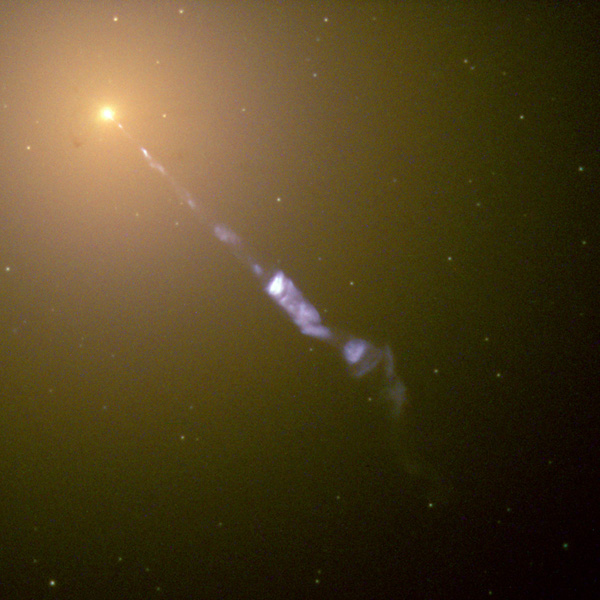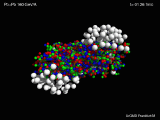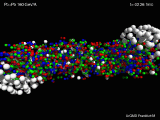
Driven by the interest in both astronomy and the microscopic nature of the world I started my study of physics at the University of Karlsruhe and Heidelberg. I wrote my diploma thesis at the Landessternwarte Königstuhl in the group of Prof. Dr. M. Camenzind under the supervision of Priv.-Doz. Dr. A. Hujeirat about the formation of relativistic jets that emanate from compact objects such as black holes or neutron stars that accrete material from their environment. Until today there is no consensus about the fundamental mechanism underlying jet formation due to observational limitiations and the difficulty of theoretically describing accretion flows around compact objects in terms of general relatvistic magnetohydrodynamics.

The giant elliptical galaxy M87 was the first source discovered to eject a jet (Curtis, 1918).
Credit: NASA and The Hubble Heritage Team (STScI/AURA).
In my PhD thesis I have turned to the microcosm of elementary particle physics, working at the Institut für Theoretische Physik with my supervisor Prof. Dr. Georg Wolschin. More specifically the thesis is concerned with the quark-gluon plasma (QGP) that is formed at temperatures in excess of 1012 K for less than 3 · 10-23 s in the relativistic heavy ion collisions performed with lead nuclei at the CERN LHC. Due to its extremely short lifetime the properties of the QGP have to be probed by indirect methods. In my thesis I have investigated the suppression of heavy Υ mesons, consisting of a bottom quark-antiquark pair, as a signature for the presence of the QGP.





Schematic illustration of two colliding lead nuclei. Credit: Weber and The UrQMD-Collaboration (2012).
Aside from the usual research I sometimes got occupied with interesting calculations that were unrelated to my diploma or PhD thesis. In cases where these calculations became more involved it helped my understanding to write everything down. Here I provide a few notes that have accumulated over the years so they might help others who encounter similar difficulties or questions.